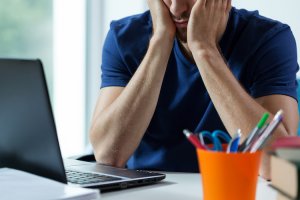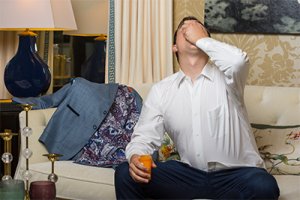How Long Does Klonopin Stay in Your System?

Klonopin is a drug used to treat panic disorder and certain types of seizures. It has a long half-life and can remain in a person’s system for weeks.
In studies, Klonopin was detectable on a urine test for up to a month, on a hair test for up to 28 days, and on a saliva test for up to 5 or 6 days.
Abuse of Klonopin can lead to addiction and physical dependence. People who have become dependent on the drug should work with a physician or addiction treatment program to gradually reduce the dose (taper), as stopping abruptly can be dangerous and even life-threatening.
How Is Klonopin Used?
Clonazepam, also known by the brand name Klonopin, is a prescription sedative medication used to treat panic disorder and seizure disorders. Specifically, it is aimed at treating Lennox-Gastaut syndrome, akinetic, and myoclonic seizures.1
Klonopin is in the benzodiazepine class of drugs and is believed to achieve its effects by enhancing the activity of the neurotransmitter gamma-aminobutyric acid (GABA), which is the main inhibitory neurotransmitter in the brain.1
What Are the Effects?
The intended effect of Klonopin is to reduce the occurrence of seizures or panic attacks. Despite its therapeutic benefits, use of the drug may have some side effects, including:2
- Feelings of tiredness
- Depression (mostly found in adults).
- Irritability.
- Dizziness.
- Coordination and balance issues.
- Problems with concentration.
- Memory and attention problems.
- Nausea.
- Loss of appetite.
Serious side effects include:3
- Increased heart rate.
- Low blood pressure.
- Respiratory depression.
- Difficulty breathing.
- Drowsiness.
- Impaired speaking.
- Loss of consciousness.
- Loss of pleasure (anhedonia).
- Depressed mood.
- Suicidal ideation.
According to the National Alliance on Mental Illness (NAMI), many drugs may interact with Klonopin.
- Concurrent use of ketoconazole, itraconazole, nefazodone, fluvoxamine, and cimetidine may increase the blood levels and effects of clonazepam.3
- Concurrent use of carbamazepine, phenytoin, and phenobarbital may decrease levels of the drug, making Klonopin less effective.3
Likewise, combining Klonopin with alcohol, sleeping pills, opioids, anti-anxiety medications, antipsychotic medications, other anticonvulsants, antidepressants, and antihistamines can cause increased drowsiness. Combining Klonopin and other benzodiazepines, alcohol, and opioids can also lead to slowed breathing, coma, and death.3
In addition to experiencing adverse side effects, it is possible to overdose from taking too much clonazepam—and this risk is increased when it is combined with alcohol and other drugs. If you observe someone experiencing an overdose, call for emergency medical help right away.
Signs and symptoms of overdose include:1
- Poor reflexes.
- Confusion.
- Extreme drowsiness.
- Coma.
Flumazenil is a drug that can partially or completely reverse the effects of a clonazepam overdose. However, it is used in emergency settings as a part of overdose treatment and not as a substitute for it. By blocking the benzodiazepine effect of clonazepam, flumazenil administration could result in seizures in susceptible patients—so it will be administered by the emergency team with caution.1
How Long Does It Stay in Your Body?
Due to its long half-life of 20-50 hours, clonazepam stays in the body for a longer time than other drugs with relatively shorter half-lives. The half-life of a drug refers to the amount of time it takes a person’s body to eliminate half of the dose.4
Individual factors can affect the result of a test, including:5,7
- Age.
- Gender.
- Health.
- Weight.
- pH of urine.
- Urine concentration.
- When the last dose was taken.
- Amount taken.
- Frequency of use.
How Do You Detox From Klonopin?
Klonopin is a Schedule IV controlled substance, which means it has some potential for abuse and physical or psychological dependence. Physical dependence can develop after just 2 weeks of taking the drug daily, explains the National Alliance on Mental Illness (NAMI). It is possible to develop some amount of physiological dependence even when taking the drug exactly as directed by your doctor.3
NAMI warns that clonazepam use should not be stopped abruptly or without talking to your doctor first. If stopped too abruptly, unpleasant side effects are likely to occur, and some can even be life-threatening. Withdrawal symptoms include:3,10
- Anxiety.
- Insomnia.
- Irritability.
- Dizziness.
- Sweating.
- Nausea.
- Vomiting.
- Changes in blood pressure.
- Increased heart rate.
- Hallucinations.
- Tremors.
- Seizures.
Withdrawal symptoms may not develop for more than a week, reach peak intensity during the second week, and fade during the third or fourth week.10
If you have been taking the medication under the care of a physician, you can work with them on a tapering schedule to gradually reduce the dose. The recommended tapering schedule is to decrease the dose by 0.125mg every 3 days until you are no longer taking the drug. However, talk to your doctor to determine the best dose for you.1
If you have been abusing Klonopin, a medical detox program can help ensure a safe withdrawal. These programs can help you safely taper off the drug—as well as any other drugs you have been using—and treat any complications that arise.
How Easy Is It to Become Addicted to Klonopin?
 Though it may have somewhat less abuse potential than drugs such as opioids, cocaine, or methamphetamine, people can develop an addiction to Klonopin and other benzodiazepines if they regularly abuse them. Many people abuse them in combination with other drugs. For example, they may use them to intensify an opioid high, ease withdrawal from heroin or other opioids, increase the effects of alcohol, and self-manage alcohol withdrawal.11
Though it may have somewhat less abuse potential than drugs such as opioids, cocaine, or methamphetamine, people can develop an addiction to Klonopin and other benzodiazepines if they regularly abuse them. Many people abuse them in combination with other drugs. For example, they may use them to intensify an opioid high, ease withdrawal from heroin or other opioids, increase the effects of alcohol, and self-manage alcohol withdrawal.11
People who become addicted to Klonopin and develop significant physical dependence might require the safety and supervision of a medical detoxification program followed by formal addiction treatment. There are many options available for addiction treatment, including inpatient and outpatient programs. Programs often include individual and group therapy, skill-building sessions, addiction education, medical services, and continuing care plans.
Effective treatment programs recognize that no single treatment will work for everyone, and treatment plans should be individually tailored and continually reviewed and updated. Treatment must also address any co-occurring substance use or mental health disorders in order to prevent relapse.12 For example, people who started taking Klonopin for panic disorder and began abusing it need treatment for their panic disorder and substance abuse. Otherwise, they may begin abusing substances again if their panic symptoms resurface.
If you’re ready to get help for an addiction to Klonopin or another substance, begin exploring your options today.
Sources
- Food and Drug Administration. (2017). Klonopin Tablets (clonazepam).
- Epilepsy Foundation. Clonazepam.
- National Alliance on Mental Illness. (2019). Clonazepam (Klonopin).
- Epocrates. Clonazepam.
- University of Rochester Medical Center. Benzodiazepines (Urine).
- Negrusz, A. et al. (2003). Elimination of 7-aminoclonazepam in urine after a single dose of clonazepam. Analytical and Bioanalytical Chemistry, 376(8).
- Moeller, K., Kissack, J., Atayee, R., and Lee, K. (2017). Clinical Interpretation of Urine Drug Tests: What Clinicians Need to Know About Urine Drug Screens. Mayo Clinic Proceedings.
- Negrusz, A. et al. (2002). Deposition of 7-Aminoclonazepam and Clonazepam in Hair Following a Single Dose of Klonopin. Journal of Analytical Toxicology, 26, 471-478.
- Nordal, K., Oiestad, E.L., Enger, A., Christophersen, A.S., and Vindenes, V. (2015). Detection Times of Diazepam, Clonazepam, and Alprazolam in Oral Fluid Collected From Patients Admitted to Detoxification, After High and Repeated Drug Intake. Therapeutic Drug Monitoring, 37(4), 451-460.
- American Psychiatric Association. (2013). Diagnostic and statistical manual of mental disorders (5th ed.). Arlington, VA: American Psychiatric Publishing.
- Longo, L., and Johnson, B. (2000). Addiction: Part I. Benzodiazepines—Side Effects, Abuse Risk and Alternatives. American Family Physician, 61(7), 2121-2128.
- National Institute on Drug Abuse. (2019). Treatment Approaches for Drug Addiction.
